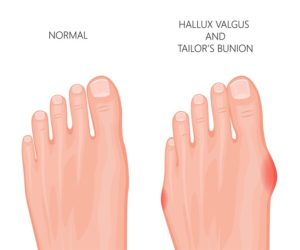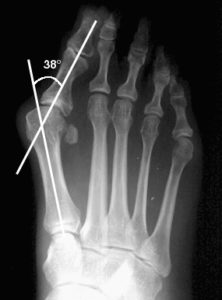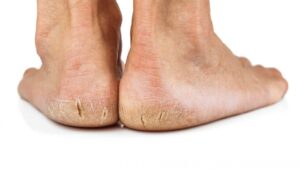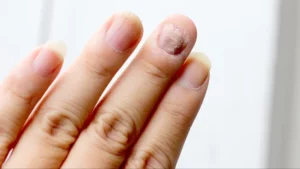
Cause
The word “bunion” comes from the Greek word for turnip; this vegetable resembles the red, swollen lump that is caused by this condition. The medical term used to describe bunions is “hallux valgus”. “Hallux” is the medical term used to refer to our big toes, and “valgus” is a term that refers to a deformity that leans away from the middle of our bodies. So, “hallux valgus” describes a deformity in which the big toe points towards the outside of your body.
Bunions usually affect the first metatarsophalangeal joint. This joint is the one that holds your foot and toes together. Once the structures in this joint fail, the metatarsal head (that is, the most distal bone in your big toe) starts to move inward, and this deformity is what creates the characteristic bony lumps on the side of your feet.
In some cases the bursa that surrounds the first metatarsophalangeal joint –that is, the small fluid-filled sac that cushions all the major joints in the body-, can become thickened due to the increase in pressure that the joint has to bear. This can worsen symptoms, such as pain and limited mobility.
Bunions develop over time rather than acutely. In severe cases, the hallux or big toe can even push the second toe out of place. The symptoms of a bunion include pain, swelling, redness around the affected joint, and limited mobility. Blisters and calluses can form more easily around the bunion, or where the toes touch.
Diagnosis

- Mild: 15–20°
- Moderate: 21–39°
- Severe: ≥ 40°
Treatment
Depending on the severity of your bunions, your podiatrist will recommend surgical or non-surgical treatment. In mild cases, treatment might simply be used to relieve symptoms rather than correct the deformity. In severe cases, the deformity will be corrected through the use of orthotics or surgical procedures.










